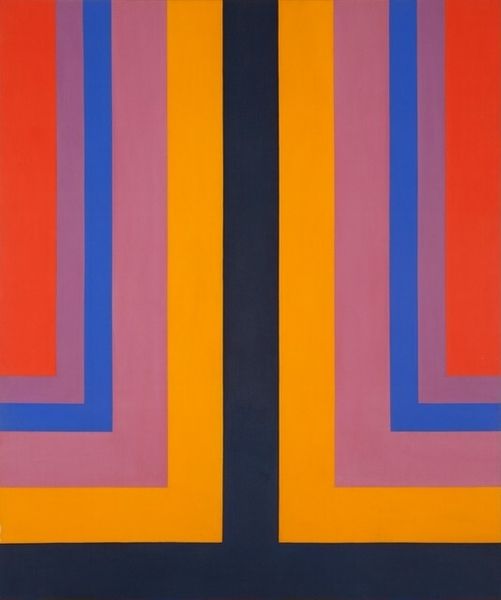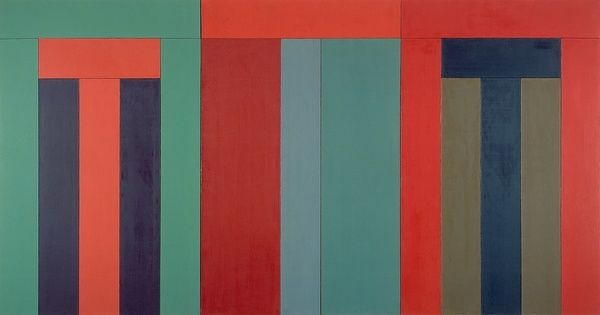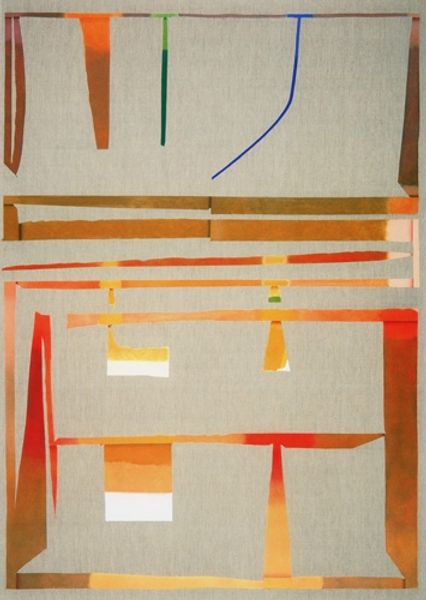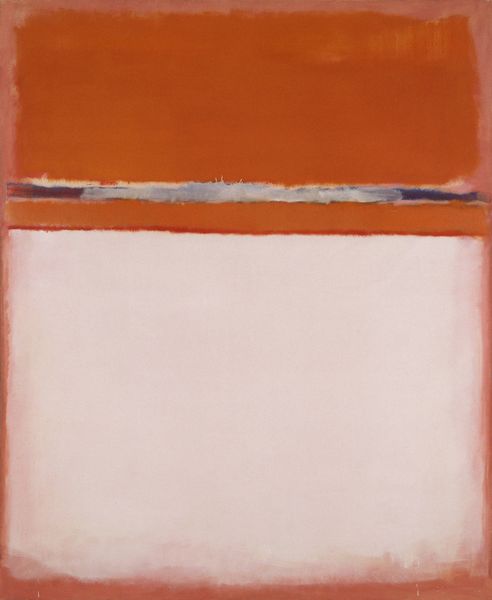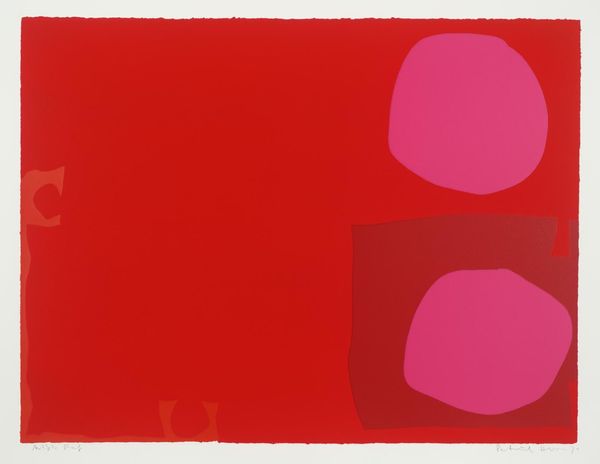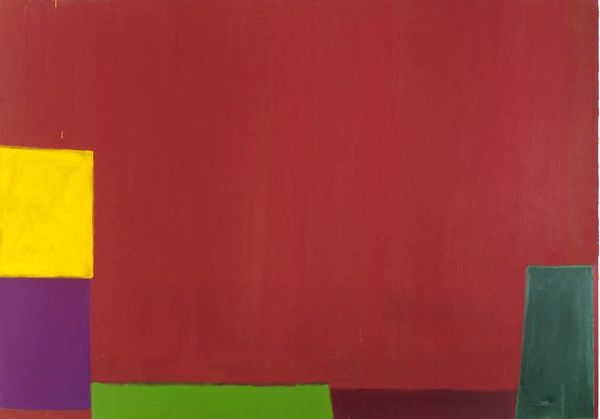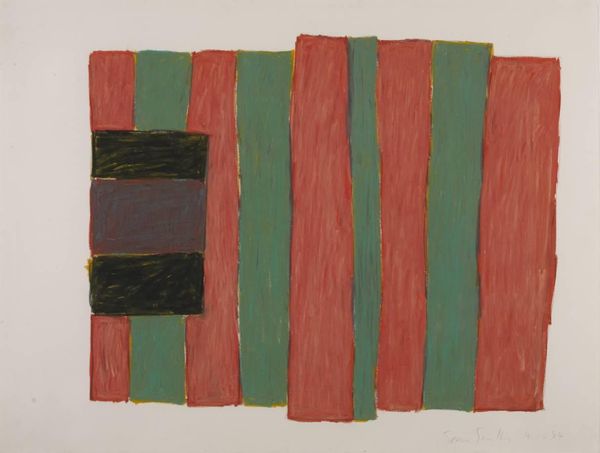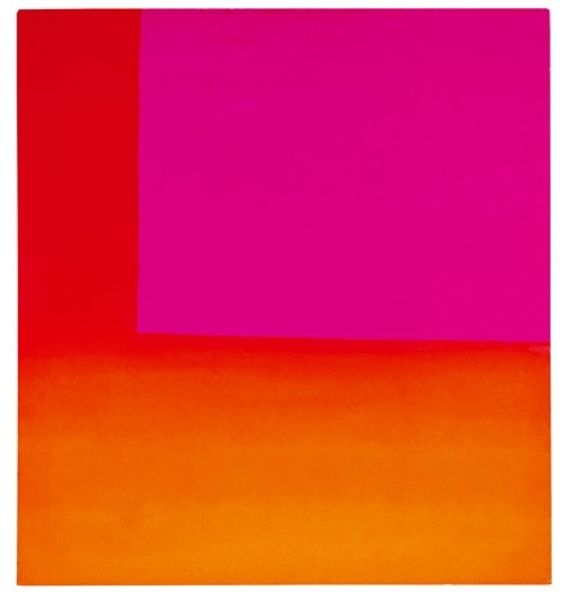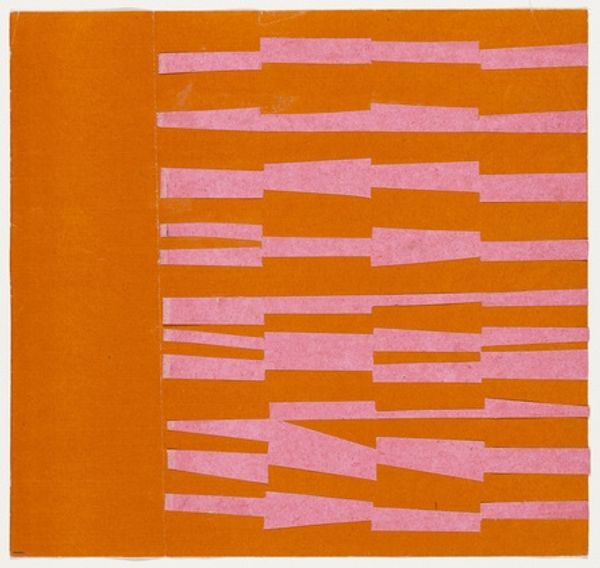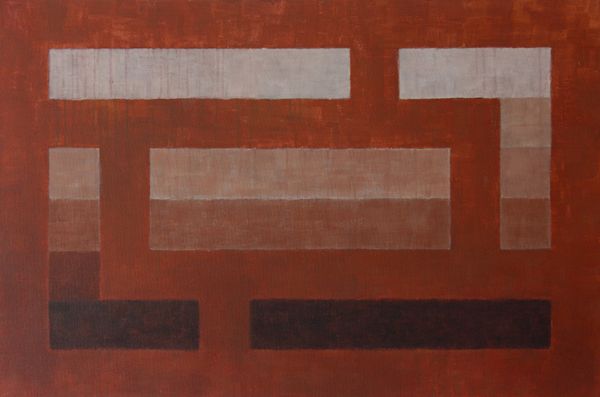
Copyright: Doug Ohlson,Fair Use
Curator: Ah, yes, Doug Ohlson's "Harlequin" from 1984. It’s hard-edged acrylic on canvas. What catches your eye? Editor: It's definitely… bold. The color blocking is so prominent. I’m curious how an abstract piece like this engages with the labor and materiality of its creation. What's your perspective on how the process informs our understanding? Curator: Think about the choices: the precise lines created with acrylic paint, the deliberate layering to produce those almost tactile color relationships. Doesn't the "hard edge" aesthetic itself emphasize the artist's control over materials, a conscious effort to separate the artistic process from spontaneous gesture? It almost negates the hand of the artist but that denial IS the mark of the artist. Editor: I see what you mean about the labor going into those precise shapes, though the apparent ease of the composition seems almost at odds with the amount of time that must have taken. It feels like a manufactured look but of course it is paint carefully handled and arranged. I hadn’t really thought about the “hard edge” aesthetic in terms of pure material control and production techniques. How does that relate to societal forces at the time? Curator: The rise of hard-edge painting, and colour-field for that matter, corresponded with industrial advancements in the availability and consistency of materials like acrylic paint. It speaks to a kind of post-war optimism, almost a faith in mass-produced, reliable components as an element of art making. Consider it alongside parallel developments in design and architecture, for example. It reflects the ethos of that time. Editor: It’s interesting how the work can reflect larger systems of industry and economics in that period. Thank you for broadening my perspective! Curator: My pleasure. Looking at the relationship between artist and material offers such rich insights, wouldn't you agree?
Comments
No comments
Be the first to comment and join the conversation on the ultimate creative platform.

